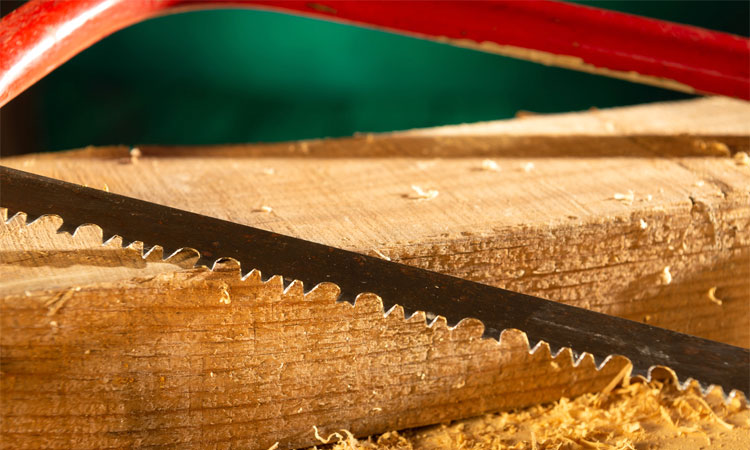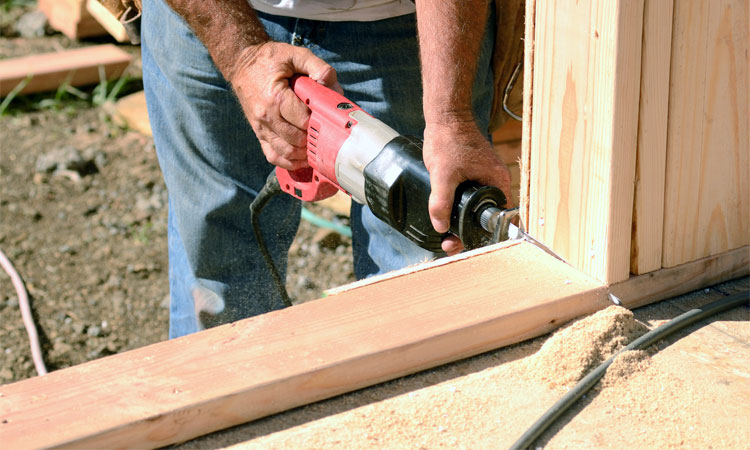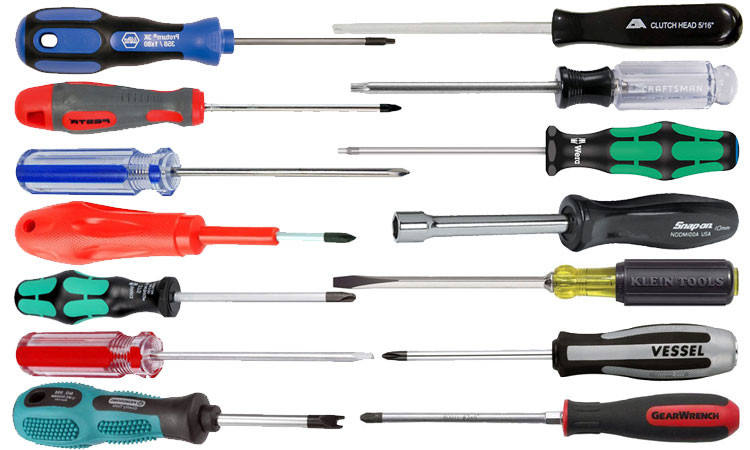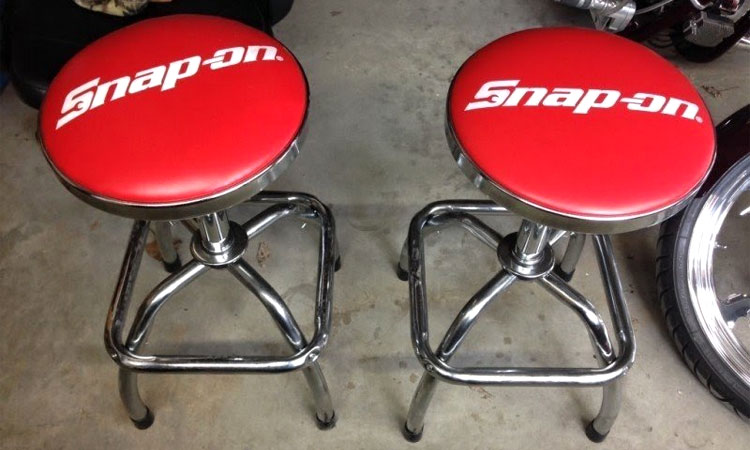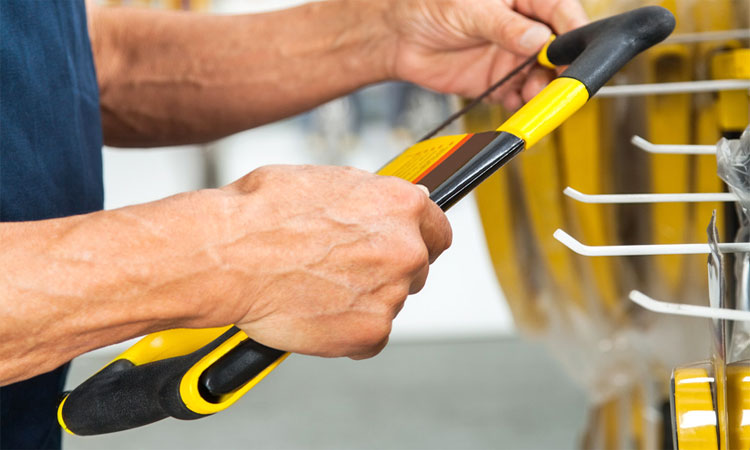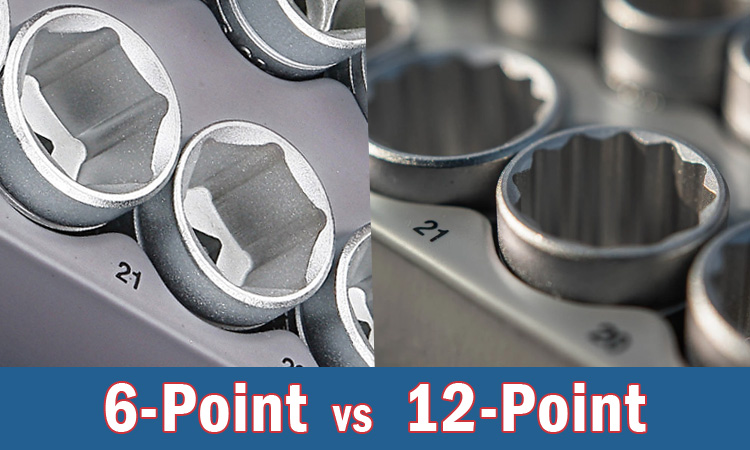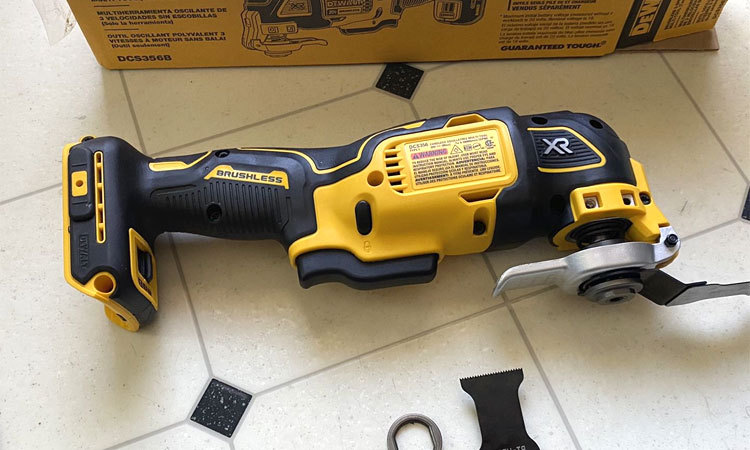8 Best Pruning Saws for Easy Trimming
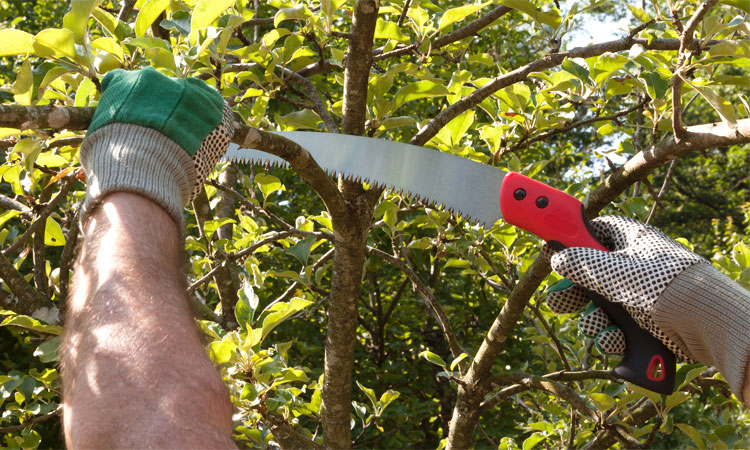
Whether you have a green thumb and love pruning trees or can’t stand the thought of it but know it needs to be done, a good pruning saw is your friend. Having the right saw on-hand can make the difference between a quick job and hours of hard cutting.
While there are numerous choices for a straight-bladed or folding hand saw, the best pruning saw for typical uses will always have a curved blade to make cutting branches up to a few inches thick feel like you’re cutting through butter.
For anything thicker or if you have a large number of trees to prune, a good pole saw or small chainsaw may be a better alternative.
The options below cover a wide range of budgets and even include an electric pruning saw. One of these will likely replace not only your hand saws, but many other pruning tools.
Our 8 Favorite Pruning Saws
| Product | Blade Length | Thickness | Weight | Made In | |
|---|---|---|---|---|---|
| Silky Zubat 270-33 | 13" | 1.5 mm | 10 oz | Japan | |
| Silky BigBoy 2000 | 14.2" | 1.4 mm | 20 oz | Japan | |
| Samurai Ichiban GC-330-LH | 13" | 1.3 mm | 12 oz | Japan | |
| Corona RS 7265D | 10" | 1.1 mm | 10 oz | S Korea | |
| Silky GomBoy 121-21 | 8.3" | 1.3 mm | 8 oz | Japan | |
| Corona RS 7395 | 14" | 1.1 mm | 11 oz | S Korea | |
| Black+Decker BES302KAPB | 6" | 0.9 mm | 6.2 lbs | China | |
| Fiskars 393440-1001 | 15" | n/a | 12 oz | China |
Pruning Saw Reviews
#1 – Silky Zubat 270-33 13″ Professional Curved Handsaw
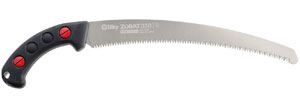
Featuring a detachable belt holder, this Japanese-made saw weighs only .65 pounds (10 ounces), or 1.1 pounds when sheathed.
Users often comment that the Zubat is more than a simple tree pruning saw, using it effectively for a number of tasks ranging from cutting tall grass to six-inch posts with equal ease.
The blade is durable and incredibly sharp, making the teeth less likely to get stuck when cutting tree branches than other saws. Owners of this hand tree saw also love the spring-loaded rollers use in the sheath design or superior retention.
There is one major issue with the Zubat, and it is an increasingly common problem with products across the board. Many consumers have purchased this tool only to receive a variation with 300mm blade and plastic handle screws instead of the 330mm blade with metal handle screws. This variation is prone to breaking, and you will not know which version is shipped unless you order specifically from a reputable source.
>> Check current price <<
#2 – Silky BigBoy 2000 Professional 14.2″ Folding Pruning Saw
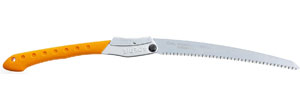
The blade of this saw is constructed from 1.4mm thick high carbon steel with 5.5 teeth per inch, and is just over 14 inches in length. This offers a larger cutting capacity, extended reach, and longer stroke for fast cutting.
In the past, a limited number of users have stated that their one main concern with the Silky BigBoy, is that it does not lock in the closed position. However, even this minor issue does little to curb the enthusiasm of consumers.
>> Check current price <<
#3 – Samurai Ichiban GC-330-LH 13″ Pruning Saw
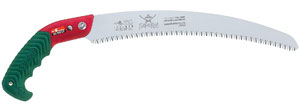
The included scabbard takes inspiration from sword scabbards, allowing the blade to snap in securely, while a quick release provides easy withdrawal.
Consumers from all backgrounds have raved about the sharpness of the blade, commenting that simply touching it can break skin. While this means extra care must be taken to keep it away from children and safe handling is a must, it also allows user to saw through even 12-inch logs with ease.
Some users have even commented that it works more efficiently than electric saws, stating that a groove forms on the first pull and even living branches can be cut with very little effort.
There has been very little complaint about the Samurai, and the induction-hardened blades hold up well against wear and tear. However, like other types of saws, the teeth will eventually wear out, and your first instinct will be to re-sharpen the blade.
Those who have attempted this have found the quality of the blade drops after sharpening, making it more practical to simply replace the blade when it wears down. The extreme sharpness of the blade also means you must be very careful when handling the saw to avoid injury.
>> Check current price <<
#4 – Corona RS 7265D RazorTooth 10″ Folding Curved Saw
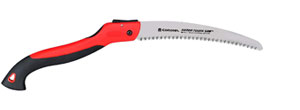
This saw’s 10-inch blade features triple-sided razor teeth, which allow for simplified cutting of limbs up to 6-inches in diameter. These teeth are also impulse-hardened to extend the life of the saw.
The Corona RS 7265D has an easy-to-latch blade that is also easily replaceable.
Some have complained that this Corona pruning saw does not completely close into its handle, thus leaving the possibility of a sharp edge being exposed. However, many of these same consumers have stated that this obstacle can be easily overcome by keeping the saw in a sheath, or wrapping it in cloth when not in use.
>> Check current price <<
#5 – Silky GomBoy 121-21 Professional 8.3″ Folding Saw
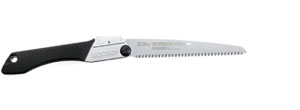
The GomBoy features an 8.3-inch blade with 8.5 teeth per inch which allows for cleaner cuts of smaller diameter limbs. At only 8 ounces, it’s one of the lightest pruning saws around and easiest to carry.
A small number of purchasers have claimed that this Silky saw’s blades break easier than other Silky saws. While this is a very rare occurrence, Silky does stand by its products with a limited lifetime warranty. If the issue is due to user error, replacement blades can be installed with relative ease, taking only minutes to accomplish, thereby mitigating any difficulties of this nature.
>> Check current price <<
#6 – Corona RS 7395 RazorTooth 14″ Curved Pruning Saw
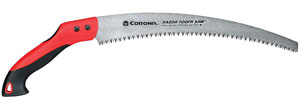
Likewise, the chrome plating and triple-ground, impulse-hardened teeth create less friction while removing up to three times as much material per stroke.
As a final bonus, the ergonomic, no-slip handle and blade are interchangeable, allowing you to switch between different blade lengths or handle shapes as needed for the perfect job every time.
When it comes to the blade, consumers are quick to mention the extreme sharpness, the resistance to dulling, and how little it bends when sawing. They note very little maintenance is needed, and the same blade will still cut well after years of use.
See Also: How to Correctly Use a Pole Saw
Users also appreciate how the light weight and narrow blade is, making it an ideal tool for working in small or hard-to-reach spaces.
There are three main complaints regarding the 7395. Owners have noted that the blade cuts mostly on the pull (similar to a Japanese saw), requiring more work than a blade which cuts both directions such as a typical bow saw. While this doesn’t diminish the cutting power on the pull, the extra strokes can make it seem less effective to some users.
The second complaint is that it is not sold with a scabbard. Consumers note that between the price and the sharpness of the blade, including a scabbard improves both the value and safety for this saw.
Finally, some saws have been known to arrive with one or both of the handle screws loose, and it is advised that you tighten them before using it or the first time.
>> Check current price <<
#7 – Black+Decker BES302KAPB Electric Pruning Saw
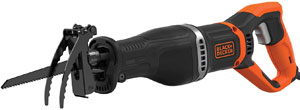
While essentially a reciprocating saw, the attached branch grabber allows you to securely hold branches for smooth cutting, saving both time and effort. The branch grabber can easily be removed allowing for other uses.
An expected complaint from consumers is that the Black+Decker saw is not cordless. While the need for an extension cord complicates the job of reaching distant shrubs and trees, it also allows the saw to cut through limbs quicker and for extended periods of time. While many cordless power tools have surpassed their corded variants, reciprocating saws are an exception according to experts.
>> Check current price <<
#8 – Fiskars 393440-1001 15″ Pruning Saw
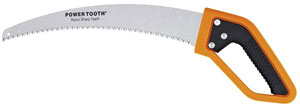
The saw also features a D-handle design that provides excellent comfort/control and allows you to flip the saw for undercuts as needed.
The one complaint that consumers seem to regularly have is that the Fiskars saw does not come with a sheath. However, this can be easily overcome with the separate purchase of an appropriately sized sheath.
>> Check current price <<
How to Choose a Pruning Saw
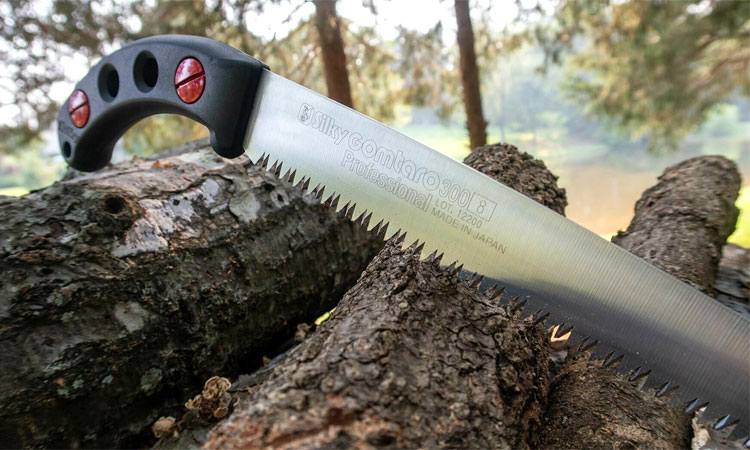
Manual vs Powered
Prior to purchasing a pruning saw, one must decide whether a manual or powered model is best for their particular needs. Both are of value when used as directed by their manufacturers. However, it pays to first consider the manner in which you intend to use any saw that is purchased.
Manual pruning saws cost far less to purchase than powered alternatives. However, on the flip side, saws of this nature require a much higher input of labor to use, than those powered by electric motors.
On the other hand, powered pruning saws are far more efficient to use, and complete jobs in a fraction of the time as their manual counterparts. However, one can also expect to pay substantially more when purchasing a powered pruning saw, pole saw, or chainsaw.
Straight vs Curved
Pruning saw blades generally come in one of two configurations, straight and curved. Each of these two blade types provides value when utilized in the situation for which they were designed. However, one must carefully select the blade type that best suits their needs, based upon knowledge of the task at hand.
Straight pruning saw blades are intended for use at chest level, hence the blade’s straight configuration. This allows for maximum teeth-to-wood contact, thereby making quick work out of most any limb that stands in the way. However, a straight pruning blade is often difficult to use when cutting overhead or below-foot, as it becomes difficult to generate adequate leverage.
Curved pruning saw blades are employed when cutting overhead or below-foot. This is due to the fact that this blade’s curved shape makes it easier to exert leverage on any limb that is to be cut. However, curved pruning saw blades are a poor choice for use at chest level, as one’s range and angle of movement are restricted when sawing.
In a side-by-side comparison, a straight pruning saw is likely more versatile for general use. Therefore, a saw of this style tends to be an excellent choice for those looking to only purchase a single pruning saw. However, one is also cautioned to carefully consider the type of work that they intend to complete, before making any purchase.
Blade Length
The length of a pruning saw’s blade is yet another factor worthy of your consideration. This length determines the number of strokes that will be required to sever a particular limb, as well as the maximum size of the limb that can be cut.
Because of this, it is vital to study the size of limbs that you intend to cut, prior to making any purchase. As a general rule, one should choose a pruning saw with a blade that is twice as long as the maximum diameter of any limb that is to be cut.
While it is certainly possible to opt for the use of a larger blade than is required, doing so will limit a saw’s range of portability. Therefore, saws of this nature might not be best suited to use in cumbersome or difficult to reach locations.
Teeth
The number and construction of teeth found on a given pruning saw blade play an enormous role in a saw’s functionality. The more teeth that a saw has, the faster a particular cut will be made. However, a blade with a higher tooth count also tends to be far more labor intensive to use.
Additionally, certain pruning saw blades feature teeth that are designed to cut under a pulling motion only, while others cut during both the push and pull. The former requires approximately double the effort to completely cut through any limb that is being sawed.
Handle
The majority of today’s pruning saws feature a curved handle, designed to provide comfort during extended periods of use. These handles are typically constructed of composite material, though rubber coated handles are also popular.
Handles of this nature provide a much better grip, under most adverse conditions.
Before purchasing a pruning saw, it is important to carefully inspect the handle of each saw up for consideration. Every individual’s hands are different. Therefore, one particular style of handle might prove more comfortable than others.
Scabbard
Many pruning saws come complete with a custom-fit scabbard. A scabbard is a protective sheath that prevents the blade of a pruning saw from becoming damaged. The use of this scabbard also prevents personal injury, by eliminating the possibility of incidental contact with the saw’s blade.
It is important to consider whether or not a particular pruning saw comes with a suitable scabbard. If a saw of interest does not come with a scabbard, one must consider the price of purchasing such equipment separately.
Blade Quality
Before purchasing any pruning saw, one should carefully inspect the blade of any saw being considered. A pruning saw’s blade should be high in quality, and free of any visual defects. This is of the utmost importance, as sub-par blades seldom provide long service lives.
Simply put, one is often better to spend a few more dollars to purchase a saw with a blade of superior quality, than to settle for a blade of poor construction. Doing so will surely save much in the way of frustration, over the course of several years.
One should also consider the difficulty associated with sourcing replacement blades, should a saw’s original blade break, or otherwise become damaged. Ideally, replacement blades of this nature should be widely available for purchase, and easy to locate.
If replacement blades of this nature are scarce and not openly available, one can quickly find themselves stuck with a pruning saw that is of little to no use.
As such, a consumer would be left with little recourse but to purchase another pruning saw to meet their needs. This, in turn, leads to a secondary expenditure that would not have otherwise been necessary.
Pruning Saw vs Bow Saw vs Reciprocating Saw
Pruning Saw
A pruning saw is a small, lightweight apparatus used for cutting and clearing brushes and small limbs. Saws of this type typically feature blades that are 6”-15” in length.
These blades come in both straight and curved configurations, providing consumers with multiple options to choose from when attempting to locate a pruning saw that best meets their needs.
Pruning saw blades also come with varying tooth counts. Finer blades feature a higher tooth count and are used for sawing hardwood, while coarse blades feature fewer teeth, and are ideally suited to saw softwoods.
Though pruning saws have traditionally been of manual construction, a number of new power pruners have recently come available. These saws allow consumers to complete tasks in record time, without expending unnecessary effort. As such, saws of this type are gaining favor quite rapidly.
Bow Saw
A bow saw is a small, metal framed hand saw that is designed to easily cut through branches, limbs, and small logs. This type of saw features an elongated blade, complete with teeth of a crosscut configuration. Therefore, a bow saw cuts during both push and pull motions, thereby speeding up progress as a whole.
A quick glance at a bow saw will provide clues to the origin of its name. A bow saw does exhibit the general shape of an archer’s bow, due to the obvious curvature of its handle. This saw can be used to create both curved and straight cuts, making it a favorite of gardeners, landscapers, and DIY specialists alike.
Reciprocating Saw
Reciprocating saws, though not specifically designed for cutting branches, limbs, or other brush, do receive their fair share of landscaping use. This stems from the overall popularity of the reciprocating saw and the fact that many DIY enthusiasts already have a saw of this type on hand.
Most of today’s reciprocating saws are driven by electric motors, thereby making quick work out of most any pruning project.
Also of value is the relatively quick manner in which reciprocating saw blades can be changed out. This saves time and effort when attempting to get the job done, without undue delay. However, care should be taken when cutting wood, as reciprocating saw blades are quite thin and can bind with little pressure.
It is also worth mentioning that reciprocating saws are not the best choice when cutting overhead, as their blades are relatively short in length. Attempting to cut overhead also poses a substantial safety risk.


